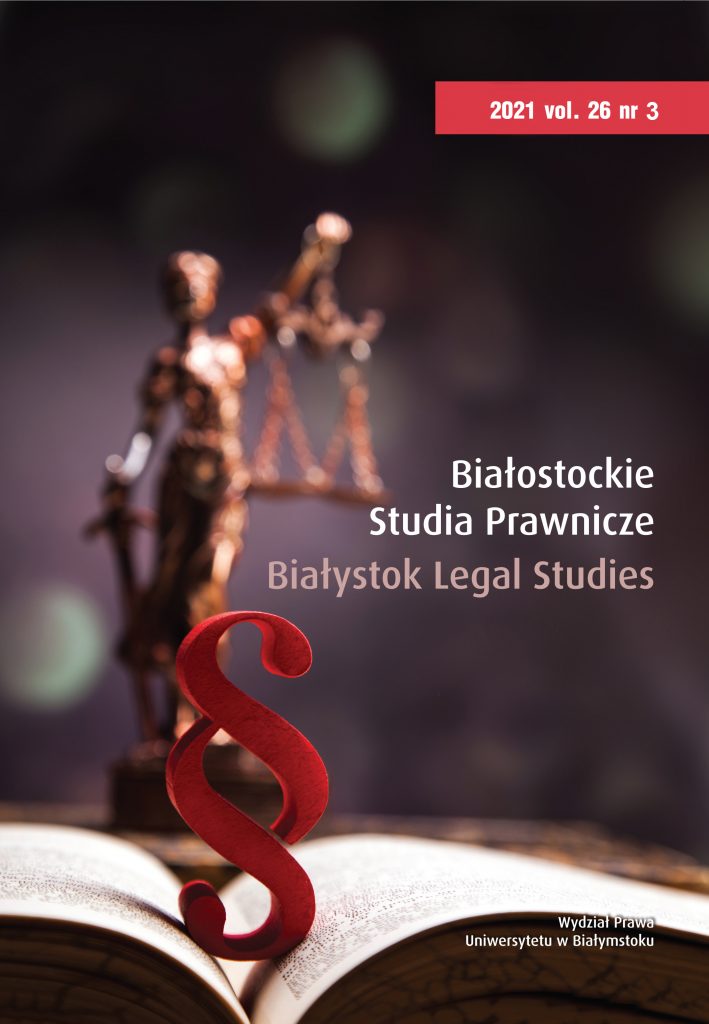Is the Traditional Method of Regulation (the Legislative Act) Sufficient to Regulate Artificial Intelligence, or Should It Also Be Regulated by an Algorithmic Code?
Słowa kluczowe:
AI, AI ecosystem, AI regulation, Algorithm, law as IT code, RegTech, LegalTechAbstrakt
The issue of the regulation of artificial intelligence (AI) is one of the significant challenges faced by the EU at present. Most researchers focus on the substantive scope of AI regulation, including state law, ethical norms and soft law. In addition to the substantive and legal scope of the regulation, it is worthwhile considering the manner of such regulation.1 Since AI is an algorithmic code, it seems correct to regulate (restrict) AI not so much with traditional law established in natural (human) language as with one implemented into algorithms. They may operate as a tool supporting traditional legislation (RegTech), but it is possible to go further with the issue and create regulation algorithms which implement the law as the effective law. However, this requires a new approach to law and legislation – the law as algorithmic code.Bibliografia
Aires J., Pinheiro D., Strube de Lima V. and Meneguzzi F., Norm conflict identification in contracts, “Artificial Intelligence and Law” 2017, vol. 25.10.1007/s10506-017-9205-x
Araszkiewicz M.: Algorytmizacja myślenia prawniczego. Modele, możliwości, ograniczenia, (in:) D. Szostek (ed.), Legal tech. Czyli jak bezpiecznie korzystać z narzędzi informatycznych w organizacji, w tym w kancelarii oraz dziale prawnym, Warsaw 2021.
Artificial Intelligence (AI): new developments and innovations applied to e-commerce, https://www.europarl.europa.eu/thinktank/en/document.html?reference=IPOL_IDA(2020)648791.
Artificial Intelligence and Data Protection in Tension, 01.11.2018, https://www.informationpolicycentre.com/uploads/5/7/1/0/57104281/cipl_ai_first_report_-_artificial_intelligence_and_data_protection_in_te....pdf.
Australian Government, Artificial Intelligence: Solving problems, growing the economy and improving our quality of life, 20.12.2019, https://data61.csiro.au/en/Our-Research/Our-Work/AI-Roadmap.
Badiul Islam M. and Governatori G., RuleRS: A Rule-Based Architecture for Decision Support Systems, “Artificial Intelligence and Law” 2018, vol. 26.10.1007/s10506-018-9218-0
Barfield W. and Pagallo U., Law and AI, Cheltenham/Northampton 2020.
Barton T.D., Haapio H., Passera S. and Hazard J.G., Successful Contracts: Integrating Design and Technology, (in:) M. Corrales, M. Fenwick and N. Forgó (eds.), Robotics, AI and the Future of Law, Singapore 2018.10.1007/978-981-13-6086-2_3
Boulet R., Mazzega P. and Bourcier D., Network Approach to the French System of Legal Codes, part II: The Role of the Weights in a Network, “Artificial Intelligence and Law” 2018, vol. 26.10.1007/s10506-017-9204-y
Chinen M., Law and Autonomous Machines, Cheltenham 2019.10.4337/9781786436597
Communication from the Commission to the European Parliament, the European Council, the Council, the European Economic and Social Committee and the Committee of the Regions on Artificial Intelligence for Europe, Brussels (COM(2018) 237), 25.04.2018, https://eur-lex.europa.eu/legal-content/EN/TXT/?uri=COM%3A2018%3A237%3AFIN.
Corrales M., Fenwick M. and Haapio H., Legal Tech, Smart Contracts and Blockchain, Singapore 2019.10.1007/978-981-13-6086-2
Cyrul W., LegalTech a tworzenie i publikacja tekstów prawnych, (in:) D. Szostek (ed.), Legal Tech. Czyli jak bezpiecznie korzystać z narzędzi informatycznych w organizacji, w tym w kancelarii oraz dziale prawnym, Warsaw 2021.
Declaration by the Committee of Ministers on the manipulative capabilities of algorithmic processes, 13.02.2019.
eIDAS Regulation, https://digital-strategy.ec.europa.eu/en/policies/eidas-regulation.
EU guidelines on ethics in artificial intelligence: Context and implementation, https://www.europarl.europa.eu/RegData/etudes/BRIE/2019/640163/EPRS_BRI(2019)640163_EN.pdf.
European Artificial Intelligence (AI) leadership, the path for an integrated vision https://nws.eurocities.eu/MediaShell/media/European_AI_study.pdf.
European Commission For The Efficiency Of Justice, European Ethical Charter on the use of artificial intelligence in judicial systems, Guidelines on Artificial Intelligence and Data Protection T-PD(2019)01, 14.04.2021.
Executive Office of the President of the United States, 2016–2019 Progress report: Advancing artificial intelligence R&D (November 2019), https://www.whitehouse.gov/wp-content/uploads/2019/11/AI-Research-and-Development-Progress-Report-2016–2019.pdf.
Feldstein S., The Global Expansion and AI Surveillance, Washington 2019.
Fenwick M., Vermeulen E.P.M. and Corrales M., Business and Regulatory Responses to Artificial Intelligence: Dynamic Regulation, Innovation Ecosystems and the Strategic Management of Disruptive Technology, (in:) M. Corrales, M. Fenwick and Nikolaus Forgó (eds.), Robotics, AI and the Future of Law, Singapore 2018.10.1007/978-981-13-2874-9_4
Finlay S., Artificial Intelligence and Machine Learning for Business, Great Britain 2018.
Gautrais V., Lex Electronica: d’aujourd’hiu a demain, “Lex Electronica” 2016, http://www.lex-electronica.org/articles/volume-21/lex-electronica-daujourdhui-a-demain.
Governatori G., Idelberger F., Milosevic Z., Riveret R., Sartor G. and Xu X., On legal contracts, imperative and declarative smart contracts, and blockchain system, “Artificial Intelligence and Law” 2018, vol. 26.10.1007/s10506-018-9223-3
Harasimiuk D. E. and Braun T., Regulating Artificial Intelligence. Binary Ethics and the law, London/New York 2021.10.4324/9781003134725
Hartung M., Bues M. and Halblieb G., Legal Tech, Baden-Baden 2018.
Hildebrandt M., Smart Technologies and the End(s) of Law, Northampton 2016.10.4337/9781849808774
Interpol Innovation Centre, Singapore, Innovation Report Artificial Intelligence, https://media.licdn.com/dms/document/C4E1FAQHbuEqCSHEUsQ/feedshare-document-pdf-analyzed/0?e=1549350000&v=beta&t=lpYHjU3SizFf82swBk3g33TLFqWGRy8EjbKyhLPsST0.
Johnson D. R. and Post D., Law And Borders: the Rise of Law in Cyberspace, “Stanford Law Review” 1996, vol. 48, no. 5.10.2307/1229390
Kerikmäe T. (ed.) Regulating eTechnologies in the European Union. Normative Realities and Trends, Cham 2014.10.1007/978-3-319-08117-5
Krasuski A., Status sztucznego agenta. Podstawy zastosowania sztucznej inteligencji, Warsaw 2021.
Kulesza J., Międzynarodowe prawo Internetu, Poznań 2010.
Lai L. and Świerczyński M. (eds.), Prawo Sztucznej Inteligencji, Warsaw 2020.
Leens R., Regulating New Technologies in Times of Change, (in:) L. Reins (ed.), Regulating New Technologies in Uncertain Times, Cham 2019.10.1007/978-94-6265-279-8_1
Lessig L., Code and Other Laws of Cyberspace, New York 1999.
Lessig L., Code is Law: On Liberty in Cyberspace, “Harvard Magazine”, https://harvardmagazine.com/2000/01/code-is-law-html.
Liability for Artificial Intelligence and other emerging digital technologies: Report from the Expert Group on Liability and New Technologies – New Technologies Formation, https://ec.europa.eu/transparency/regexpert/index.cfm?do=groupDetail.groupMeetingDoc&docid=36608.
M. Hildebrandt, Algorithmic Regulation and the Rule of Law, “Philosophical Transactions of the Royal Society A” 2018, vol. 376, issue 2128, https://royalsocietypublishing.org/doi/10.1098/rsta.2017.0355.10.1098/rsta.2017.0355
Magnusson Sjöberg C., Legal Automation, AI and Law Revisited, (in:) M. Corrales, M. Fenwick and Haapio H., Legal Tech, Smart Contracts and Blockchain, Singapore 2019.10.1007/978-981-13-6086-2_7
McCarthy J., Minsky M.L., Rochester N. and Shannon C.E., A Proposal for the Dartmouth Summer Research Project on Artificial Intelligence http://jmc.stanford.edu/articles/dartmouth/dartmouth.pdf.
Menthe D.C., Jurisdiction in Cyberspace: a Theory of International Spaces, “Michigan Telecommunications and Technology Law Review” 1998, no. 69.
Minsky M., Perceptrons: An Introduction to Computational Geometry, Massachusetts 1969.
Minsky M., The Emotion Machine. Commonsense Thinking, Artificial Intelligence, and the Future of the Human Mind, New York/London/Toronto/Sydney 2007.
Nanda R., Siragusa G., Di Caro L., Boella G., Grossio L., Gerbaudo M. and Costamanga F., Unsupervised and Supervised Text Similarity Systems for Automated Identification of National Implementing Measures of European Directives, “Artificial Intelligence and Law” 2019, vol. 27.10.1007/s10506-018-9236-y
National Artificial Intelligence Strategy of the Czech Republic, https://www.mpo.cz/assets/en/guidepost/for-the-media/pressreleases/2019/5/NAIS_eng_web.pdf.
Prabucki R., Szostek D. and Wyczik J., Prawo jako kod, (in:) D. Szostek (ed.), Legal tech. Czyli jak bezpiecznie korzystać z narzędzi informatycznych w organizacji, w tym w kancelarii oraz dziale prawnym, Warsaw 2021.
Proposal For A Regulation Of The European Parliament And Of The Council Laying Down Harmonised Rules On Artificial Intelligence (Artificial Intelligence Act) And Amending Certain Union Legislative Acts Com/2021/206 Final, https://Eur-Lex.Europa.Eu/Legal-Content/EN/TXT/?Uri=CELEX:52021PC0206.
Railas L., The Rise of the Lex Electronica and the International Sale of Goods, Helsinki 2004.
Recommendation of Committee of Ministers No. 2102 (2017) about technological convergence, artificial intelligence and human rights (Doc. 14432).
Recommendation of the Council on Artificial Intelligence, OECD, https://legalinstruments.oecd.org/en/instruments/OECD-LEGAL-0449.
Recommendations on regulation, innovation and finance: Final Report to the European Commission, 01.12.2019, https://ec.europa.eu/info/sites/info/files/business_economy_euro/banking_and_finance/documents/191113-report-expert-group-regulatory-obstacles-financial-innovation_en.pdf.
Report with recommendations to the Commission on a civil liability regime for artificial intelligence (2020/2014(INL)), https://www.europarl.europa.eu/doceo/document/A-9–2020-0178_EN.html.
Responsibility and AI: Council of Europe study, 21.12.2019, https://rm.coe.int/responsability-and-ai-en/168097d9c5.
Schrebak S., Integrating Computer Science into Legal Discipline: The Rise of Legal Programming, https://papers.ssrn.com/sol3/papers.cfm?abstract_id=2496094.
Szostek D. (ed.), Legal tech. Czyli jak bezpiecznie korzystać z narzędzi informatycznych w organizacji, w tym w kancelarii oraz dziale prawnym, Warsaw 2021.
Szostek D., Blockchain and Law, Baden-Baden 2019.10.5771/9783845298290
Szostek D., Czynność prawna a środki komunikacji elektronicznej, Krakow 2004.
Szostek D., Sztuczna inteligencja a kody. Czy rozwiązaniem dla uregulowania sztucznej inteligencji jest smart contract i blockchain? (in:) L. Lai and M. Świerczyński (eds.), Prawo Sztucznej Inteligencji, Warsaw 2020.
Szpringer W., Blockchain jako innowacja systemowa. Od Internetu informacji do Internetu wartości, Warsaw 2018.
Świerczyński M. and Lai L., Prawo Sztucznej Inteligencji, Warsaw 2020.
Tegmark M., Życie 3.0. Człowiek w Erze sztucznej Inteligencji, Warsaw 2019.
The European Commission’s high-level expert group on artificial intelligence, A definition of AI: Main capabilities and scientific disciplines. Definition developed for the purpose of the deliverables of the High-Level Expert Group on AI, Brussels, 18.12.2018, https://ec.europa.eu/digital-single-market/en/news/definition-artificial-intelligence-main-capabilities-and-scientific-disciplines.
The High-Level Expert Group on Artificial Intelligence European Commission Directorate-General for Communications Networks Technology, 20.09.2018.
Trudel P., La lex electronica, (in:) C.A. Morand (ed.), Le droit saisi par la mondialisation, Brussels 2001.
Turing A., Computing Machinery and Intelligence, “Mind” 1950, vol. 49, no. 236.10.1093/mind/LIX.236.433
Turner J., Robot Rules. Regulating Artificial Intelligence, Cham 2019.10.1007/978-3-319-96235-1
Wendehorst C.H., Safety and Liability Related Aspect of Software, 17.06.2021, https://digital-strategy.ec.europa.eu/en/library/study-safety-and-liability-related-aspects-software.10.1515/9783110775402-002
Werbach K., The Blockchain and the New Architecture of Trust, London 2018.10.7551/mitpress/11449.001.0001
White Paper On Artificial Intelligence. A European approach to excellence and trust, COM(2020) 65 final, European Commission, https://ec.europa.eu/info/sites/info/files/commission-white-paper-artificial-intelligence-feb2020_en.pdf.
Wiebe A., Die elektronische Willenserklarung, Tubingen 2002.
Wood G., Ethereum: A Secure Decentralized Generalized Transaction Ledger (EIP-150 revision), http://gavwood.com/Paper.pdf.
Wright N.D. (ed.), Artificial Intelligence, China, Russia, and the Global Order, Maxwell 2019.
Yao M., Jia M. and Zhou A., Applied Artificial Intelligence. A Handbook for Business Leaders, Middletown 2018.
Zalewski T., Definicja sztucznej inteligencji, (in:) L. Lai and M. Swierczyński (eds.), Prawo Sztucznej Inteligencji, Warsaw 2020.



